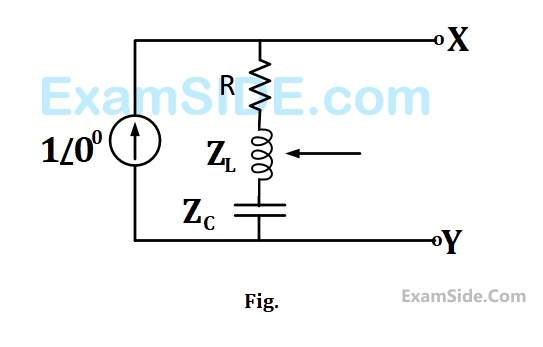Network Theorems · Electric Circuits · GATE EE
Marks 1
All the elements in the circuit are ideal. The power delivered by the 10 V source in watts is

For the circuit shown in the figure, $$V_1=8$$ V, DC and $$I_1=8$$ A, DC. The voltage $$V_{ab}$$ in Volts is __________ (Round off to 1 decimal place).

In the given circuit, for maximum power to be delivered to RL, its value should be ______ Ω. (Round off to 2 decimal places.)

The Thevenin equivalent voltage, Vth, in V (rounded off to 2 decimal places) of the network shown below, is ________







Marks 2
For the circuit shown, if $$i = \sin 1000t$$, the instantaneous value of the Thevenin's equivalent voltage (in Volts) across the terminals a-b at time t = 5 ms is __________ (Round off to 2 decimal places).

For the network shown, the equivalent Thevenin voltage and Thevenin impedance as seen across terminals 'ab' is

The current I flowing in the circuit shown below in Amperes is ________.









For the circuit given above, the Thevenin's voltage across the terminals $$A$$ and $$B$$ is

For the circuit given above, the Thevenin's resistance across the terminals $$A$$ and $$B$$ is





Marks 5
$${Z_1} = \left( {1 - j} \right)\Omega ,\,\,{Z_2} = \left( {1 + j} \right)\Omega $$ and $${Z_L} = \left( {1 + j0} \right)\Omega .$$ Obtain the Thevenin equivalent circuit (Thevenin voltage and impedance) across terminals $$X$$ and $$Y$$, and determine the current $${{\rm I}_L}$$ through the load $${Z_L}.$$


